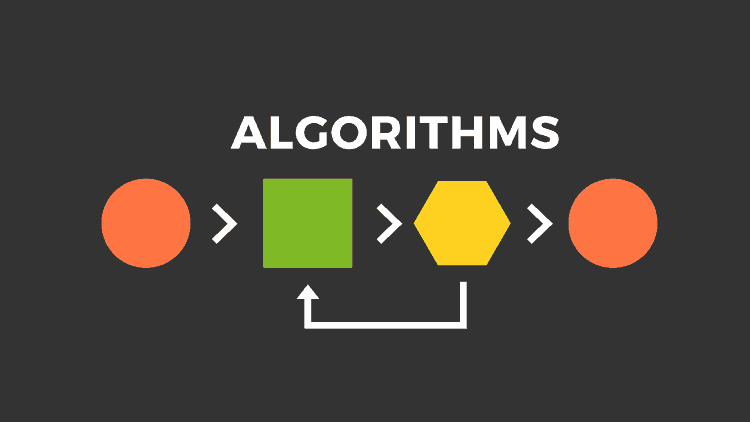Algorithmic Edge: Crypto Bot Investment Strategies Explained

The cryptocurrency landscape in 2025 is dominated by volatility and algorithmic efficiency. Manual trading is increasingly being replaced by sophisticated software—the crypto trading bot. For publishers aiming for maximum Google AdSense revenue, especially within the high-CPC (Cost-Per-Click) financial technology niche, content focused on these bots is gold. Advertisers in this space, including platform developers, exchanges, and financial advisors, pay a premium because the user intent behind a search like “best automated crypto tool” is highly transactional and lucrative.
This extensive analysis will dissect the mechanics, strategic value, and crucial risks associated with modern crypto trading bots. We’ll explore how these automated tools utilize complex algorithms to exploit market inefficiencies, the critical features publishers must review to attract high-value traffic, and the indispensable role of due diligence in this burgeoning sector. Understanding the technology is the key to creating authoritative, high-ranking content that captures premium ad impressions and clicks.
Deconstructing the Crypto Trading Bot Ecosystem

A crypto trading bot is essentially an automated program that executes buy and sell orders on a user’s behalf, based on predefined parameters or complex machine learning models. Their core value lies in removing human emotion and providing 24/7 market vigilance.
1. Core Bot Strategies and Algorithms
The strategic approach of a bot determines its risk profile and potential returns. High-CPC content must clearly explain these distinctions:
A. Arbitrage Bots
These bots exploit minor price discrepancies for the same asset across multiple cryptocurrency exchanges. For example, buying Bitcoin on Exchange A for $40,000 and simultaneously selling it on Exchange B for $40,005. While profit per trade is small, the volume and speed of execution make it profitable.
B. Market Making Bots
These programs simultaneously place limit orders to buy below and sell above the current market price of a cryptocurrency. They profit from the spread between the bid and ask price, providing liquidity to the exchange, and are essential to high-volume trading platforms.
C. Trend Following (Momentum) Bots
* Utilizing technical indicators like Moving Averages (MA), Relative Strength Index (RSI), and MACD, these bots execute trades when they detect a clear, strong market momentum in a particular direction.
D. Grid Trading Bots
These bots place a series of buy and sell limit orders within a specified price range, creating a “grid.” They profit from the natural, choppy volatility of the market by buying low and selling high within the grid’s established levels, often ideal for stablecoin pairs.
E. AI and Machine Learning Bots
The cutting edge of the sector. These bots don’t rely on fixed rules but learn from historical data, adapting their strategy in real-time to changing market conditions and economic indicators. Reviews of these advanced AI-powered investment tools command the highest CPCs.
2. Critical Technical Requirements for Bot Operation
For an article to establish technical authority and attract high-value advertisers (exchanges, developers), it must detail the operational necessities:
A. API Connectivity and Security
Bots require a secure API (Application Programming Interface) key to connect to the user’s exchange account. The content must emphasize the need for “read-only” API settings to prevent unauthorized withdrawals, a key security concern.
B. VPS (Virtual Private Server) Hosting
Trading bots must run continuously without interruption. Using a high-speed, reliable VPS service is a necessity, attracting ads from cloud hosting providers (a high CPC niche).
C. Backtesting and Optimization
Before deployment, a bot’s strategy must be rigorously backtested against historical market data. Publishers should review software tools that provide robust backtesting environments and stress-testing capabilities.
High CPC Content Strategy: Focusing on Profitability and Risk

Advertisers in the crypto bot space are selling solutions to financial gain. Therefore, the most valuable content must address the issues of profitability, risk management, and regulatory compliance.
1. Monetizing Risk Management and Security
Fear of loss drives high-intent, high-value searches. Content focusing on mitigating these risks attracts premium ads from security platforms and legal advisory services.
A. Drawdown and Risk-Adjusted Returns
Move beyond simple “profit percentages.” High-quality content should discuss Maximum Drawdown (MDD)—the largest peak-to-trough decline during a specific period. This advanced metric signals expertise and attracts professional financial advertisers.
B. Exchange and Platform Risk
Reviewing bots based on their compatibility with regulated, secure exchanges (e.g., Coinbase, Binance) is critical. Keywords like “secure crypto bot platform” or “regulated trading software” are highly valuable.
C. Anti-Scam Tools and Due Diligence
Crypto is notorious for scams. Content guiding users on how to spot fraudulent bot services or unrealistic promises provides high reader value, attracting ads from verification and auditing firms.
2. The Subscription Model and High CPC Keywords
Many successful bots and platforms operate on a subscription model, driving up their ad spend to acquire customers. Publishers must capitalize on these transactional keywords:
A. Comparison of Paid Bot Features
Create detailed comparison tables of popular subscription-based bot platforms (e.g., 3Commas, Pionex, KuCoin Bots). Include features like simultaneous trades, included assets, and cloud hosting status.
B. Keyword Modifiers for Transactional Intent
Focus on reviews using modifiers like “best value,” “cheapest subscription,” “free trial,” and “lifetime license” for specific trading software. These signal the user is ready to purchase.
C. Performance Review of Specific Bot Types
Dedicated articles reviewing the performance of a single bot type (e.g., “Top 5 Arbitrage Software in 2025”) attracts highly targeted ad inventory from those specific bot providers.
The Technical Deep Dive: Indicators, Backtesting, and Programming
To maintain E-E-A-T (Expertise, Authoritativeness, and Trustworthiness), the article must demonstrate a deep understanding of the technical tools underpinning bot logic.
1. Essential Technical Indicators for Bot Logic
Publishers should explain the indicators most commonly integrated into automated strategies:
A. Volume Weighted Average Price (VWAP)
VWAP is crucial for institutional bots, executing large orders without significantly moving the market.
B. Bollinger Bands
Bots use these bands to signal overbought (sell signal) or oversold (buy signal) conditions as prices move toward or away from the middle band (MA).
C. Ichimoku Cloud
A complex, multi-layered indicator providing support, resistance, and momentum insights, often used by advanced bots for long-term trend analysis.
D. On-Balance Volume (OBV)
OBV helps bots confirm whether price movements are backed by significant volume, reducing the risk of being caught in a false breakout.
2. Programming Languages and Development Tools
Articles reviewing the tools used to create bots attract ads from programming courses, cloud services, and developer platforms—all very high CPC.
A. Python for Algorithmic Trading
Python’s simplicity and rich library ecosystem (e.g., Pandas, NumPy) make it the dominant language. Reviews should focus on Python trading libraries like CCXT.
B. Custom Strategy Development Platforms
Many popular platforms offer a drag-and-drop or scripting interface (e.g., Pine Script for TradingView) for users to build and test their own unique strategies without writing complex code.
C. Data Aggregation and API Management Tools
High-frequency bots require real-time data from multiple exchanges. Reviews of API management software and data feed services are highly relevant to professional advertisers.
Regulatory Landscape and Compliance Tools (High-Value Legal Niche)
As crypto matures, regulation is becoming the dominant theme. Content addressing regulatory compliance attracts premium ads from legal services and compliance software providers.
1. Tax Compliance and Reporting Tools
Taxation is the most immediate regulatory concern for bot users. This is a massive, high-CPC niche.
A. Automated Crypto Tax Software
Detailed reviews of crypto tax reporting tools (e.g., CoinTracker, Koinly) that handle the complex calculation of capital gains/losses from numerous, rapid bot trades. Keywords here are exceptionally valuable.
B. Jurisdictional Compliance
Content that dissects the legality of specific bot strategies (e.g., market making) in different jurisdictions (US vs. EU vs. Asia) is vital and attracts international advisory ads.
C. KYC/AML Requirements for Exchanges
Explaining how Know Your Customer (KYC) and Anti-Money Laundering (AML) policies enforced by exchanges limit bot activity provides high E-E-A-T value.
2. Future Regulatory Tools
The future of crypto trading will involve automated compliance:
A. Decentralized Finance (DeFi) Auditing Tools
Reviews of smart contract auditing services and DeFi risk assessment platforms that bots might interact with are essential for professional readers.
B. Token and Asset Compliance Screening
Future bots will likely integrate software tools that screen assets for regulatory risks before trading them, a topic of immense interest to institutional advertisers.
Maximizing AdSense Revenue: Content Mapping and Structure
To convert high-intent crypto traffic into high AdSense revenue, the article structure must be optimized for ad placement and engagement.
1. The “Comparison-Review-Action” Structure
The article must deliver the comparative value that high-CPC advertisers pay for.
A. Initial Comparison Table
* Place a definitive comparison table of the “Top 5 Crypto Bots” near the top of the article. This block is highly engaging and serves as a prime spot for In-Article Ads or Matched Content Ads.
B. Detailed Tool Reviews
Each bot or platform should receive its own dedicated H2 section, featuring structured lists:
A. Supported Exchanges (Crucial Integration Point)
B. Strategy Options (Grid, Arbitrage, etc.)
C. Pricing Structure (Subscription vs. One-Time Fee)
D. Drawdown Performance (The Risk Metric)
AdSense Anchor: Place an ad unit directly after this high-value, structured review data.
C. FAQ on Profitability and Safety:
The conclusion should feature an extensive FAQ answering high-anxiety questions (e.g., “Are Crypto Bots Legal?” or “How Much Can I Make?”). These short, targeted answers are perfect for capturing AdSense Snippets and ad inventory.
2. Focusing on the Software as the Core Keyword
Every section should reinforce the transactional intent centered around the word “bot,” “software,” “platform,” or “tool,” which are the keywords driving the highest CPC
A. Use of Tool Modifiers in Headings
Instead of “How to Trade with Bots,” use “Deploying the Best Crypto Trading Software in 2025.”
B. Inclusion of Pricing and ROI Data:
High CPC is driven by products that solve costly problems. Your content must talk about the cost of the bot versus the potential Return on Investment (ROI) to satisfy the commercial investigation intent.
Conclusion
The analysis of crypto trading bots provides a uniquely profitable intersection for publishers: high-level financial technology meets high-volume market interest. Achieving dominance in this high-CPC niche requires more than casual content; it demands the creation of highly authoritative, technically rigorous reviews that address the sophisticated concerns of a financially motivated audience.
The strategic imperative for maximizing AdSense revenue lies in a meticulous content approach centered on transparency, risk assessment, and technical detail. This means moving beyond generic descriptions to provide in-depth analysis of specific bot strategies (Arbitrage vs. Grid), essential technical indicators (VWAP, Bollinger Bands), and the critical security and regulatory compliance tools (Tax software, API best practices). By systematically deconstructing these elements and presenting them in a highly structured, comparison-focused format, publishers naturally attract the premium advertisers—exchanges, high-end software developers, and financial compliance firms—who are willing to pay significant sums for a click from a reader exhibiting such strong transactional intent. The future profitability of AdSense in the crypto sector is inextricably linked to the publisher’s ability to act as the ultimate authority, validating and reviewing the complex algorithmic tools that power the next generation of automated investment. This expertise not only secures high rankings and E-E-A-T but fundamentally converts high-anxiety, high-value user queries into recurring, top-tier ad revenue.
